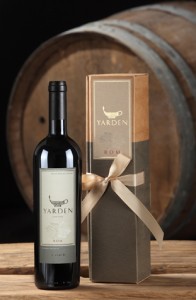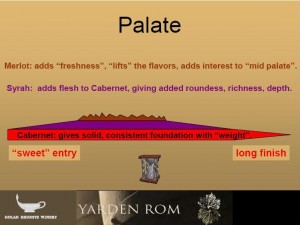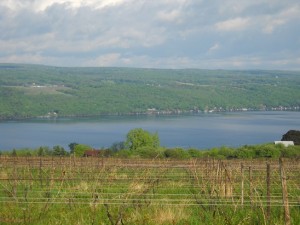Happy Mutter’s Day! The word Mutter is German for mother and, with Mother’s Day on May 8th, and our focus on Germany this month, we’re sending you a bilingual greeting.
This month, Jared and Tracy will once again participate in TasteCamp East. The 2011 itinerary includes visits to the Niagara wine regions on both the Canadian and American sides. Then, in June, Tracy will travel to the Kingdom of Navarra in Spain’s Basque region where she will taste the wines and cuisine.
Public classes begin June 25th when we’ll kickoff the season with a wine class and concert. This special evening will feature a wine class on Australian wine, followed by a concert and story-telling by Australian folksinger, Susanna Carman, as part of her U.S. tour. Enjoy wines and cheeses as you listen to Susanna sing and share her tales of living Down Under.
Other special events for the season include a wine and chocolate tasting with Roxanne Browning of Exotic Chocolate Tasting (July 17), and a class on Napa Valley Cabernet Sauvignon, with high end wines such as Diamond Creek and Far Niente (August 14). Visit our website to sign up for these and all other classes.
Drink wisely and well,
Tracy Ellen Kamens, Ed.D., DWS, CWE
CEO: Chief Education Officer
and
Jared Michael Skolnick
COO: Cork Opening Officer
A young engineer accompanied his boss on a business trip to Germany in the 1970s. One evening at dinner, their German hosts were keen to show off the quality of their wines and selected a special bottle from the restaurant’s wine list. The red wine was presented to the boss for tasting, with all eyes anxiously awaiting his reaction. The gentleman raised the glass to his lips, took a sip and declared, with his face revealing displeasure, “It’s too sweet!”
Whether true or not, for a long time, many people attributed all German wines with being too sweet. However, at least these days, the reality is that Germany produces a wide range of high quality wines from bone dry to lusciously sweet, so there are wines to suit a variety of palates and occasions. Germany’s association with sweet wines stems from its focus on the ripeness levels in its grapes. While we generally say that grapevines grow between 30-50o north and south of the equator, vineyards in Germany can be found as far north as the 52nd parallel. Given the northerly locale, reaching full grape ripeness is no easy task. Without the steep (often 45o), south-east facing slopes along the Rhine River and its tributaries, grapegrowing would not be possible in this area. As a result of this slope and orientation, the sun’s rays hit the water and reflect back onto the grapes, permitting them to reach full maturity. Consequently, such ripeness is prized and, much of the German classification is based upon ripeness/sugar levels at harvest.
This ripeness classification, whose designation is restricted to Germany’s quality wine category – Qualitatswein mit Pradikat (Quality wine with attributes), starts from the least ripe, Kabinett, followed by Spatlese, Auslese, Beerenauslese and Trockenbeerenauslese, in ascending order of ripeness. You can expect wines of Auslese level and above to be noticeably sweet, but Kabinett and Spatlese wines may be dry or off-dry (slightly sweet). One clue is to look at the alcohol level; a lower level (10% and under) will generally suggest a sweeter wine since not all of the sugar was converted into alcohol. Another is to look for the word Trocken, which is German for dry, or the terms Classic and Selection, both of which indicate dry-style wines. Those with a little sweetness will pair brilliantly with Asian or other spicy cuisine as well as fatty poultry dishes. Auslese level and sweeter wines are best saved for dessert or as accompaniment to blue cheeses, but while they do retain high levels of residual sugar, they are beautifully balanced with high acidity. This is particularly true of German Rieslings.
And, as a final note, Germany is not a one-grape wonder. In fact, Riesling’s spiritual home is also home to Pinot Noir, Gewurztraminer and a myriad of other Germanic grape varieties.
Bernhard Huber, Alte Reben Spatburgunder Trocken 2007, Baden, Germany, $75.00
From the southernmost and warmest region (Baden), this wine is produced from old vines (20-40 years of age) and presented a complex nose of wet leaves, vegetal notes and cherries. These flavors continued on the dry palate with vibrant acidity, low tannins and an extremely long finish. In a word, stunning!
Grafen Neipperg, Lemberger Trocken, 2008, Württenberg, Germany, $22.00
This estate is owned by Count (Graf) Neipperg and is located in the Württenberg region which is predominantly (70%) planted to red grapes, cherry, clove and vanilla greeted the nose . The dry palate had medium+ acidity, light tannins with flavors of bitter cherry, cloves and vanilla.
Johannishof, Charta Riesling, 2008, Rheingau, Germany, $22.00
Johannishof is owned by the Eser family, which has a winemaking history dating from 1685. This wine showed aromas of spice, floral, pineapple and peach. Dry with just a hint of ripeness, this wine has high acidity and concentrated fruit flavors of pineapple and tropical fruit, along with floral notes, all of which remain throughout the wine’s long length.
Liebfrauenstift Riesling Trocken 2009, Rheinhessen, Germany, $22.00
Originally cultivated by Capuchin monks, Peter Joseph Vlackenberg purchased a stake in the property in 1808, with his family currently owning 90% of the site. With citrus and stone aromas on the nose, this wine is dry with piercing acidity. Citrus, pith, stone and slight spice linger on the palate with long length.
Schloss Saarstein, Pinot Blanc, 2008, Mosel, Germany, $15.00
This estate is located on slate soils overlooking the Saar River. A refreshing wine, with good fruit concentration, this wine displayed floral, pear and melon notes on the nose. These notes were joined by some minerality and a hint of spice on the slightly off-dry palate with medium+ length.





